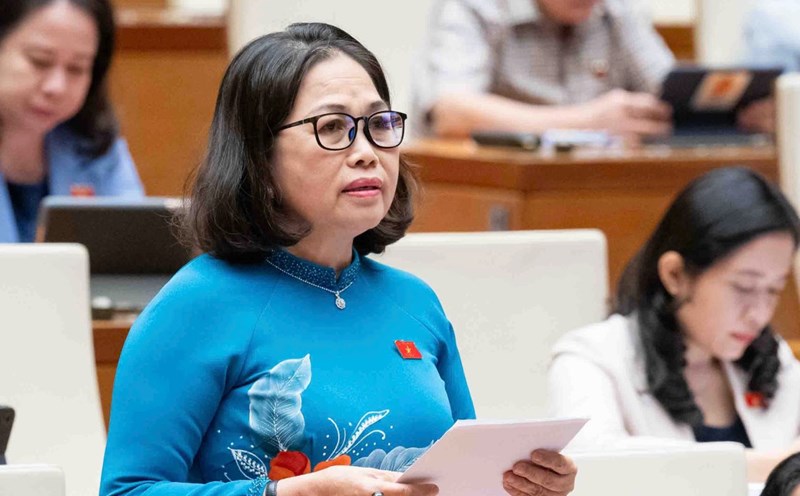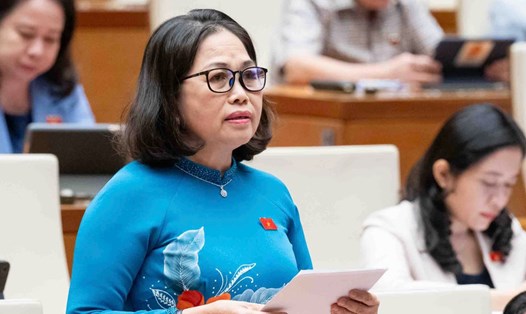National Assembly Delegate Hoang Van Cuong (Hanoi City Delegation) recounted this story when the National Assembly discussed the budget and public investment in the hall this morning (November 5). He said that this is absurd.
Delegate Hoang Van Cuong said that public investment in recent times has achieved many positive results.
“However, the breakthrough in high-quality human resources seems to have not received due attention. Typically, investment in education to develop intelligence and investment in health to develop vitality seem to be very obscure in the data on public investment,” the delegate commented.
The delegate cited data reported on central budget development investment for ministries and central agencies in each field to prove this statement:
In 2024, of the total capital of 120 trillion VND, the Ministry of Health will be allocated about 1.2 trillion VND, accounting for 1%; the Ministry of Education and Training will be allocated 1.5 trillion VND, accounting for 1.2%. In 2025, the total budget will be 148 trillion VND, the Ministry of Health will receive 5.7 trillion VND, accounting for 3.7%; the Ministry of Education and Training will receive 2.9 trillion VND, accounting for 1.9%.
In addition, in the plan to allocate the budget reserve for the 2021-2025 period and increase revenue for 2022, with a total capital of about 50 trillion VND, both education and health sectors are not listed in the investment programs.
“With such a low capital allocation, of course, hospitals under the Ministry of Health and schools under the Ministry of Education and Training do not have capital to invest in development. We talk a lot about promoting universities and hospitals to implement autonomy. But we only force facilities to implement autonomy without investing in facilities. What will be the consequences if this continues?” - the delegate asked.
To prove it, delegate Hoang Van Cuong recounted that he recently visited Phu Tho Provincial General Hospital and Phu Tho Maternity and Pediatrics Hospital - two hospitals implementing autonomous mechanisms.
“When I arrived at the hospital gate, I was surprised and did not think it was a hospital, but a hotel. When I stepped inside, I saw the facilities, examination area, treatment area, entertainment area... like a luxury hotel. The hospital has implemented a completely autonomous mechanism. Patients enjoy such facilities and conditions for examination and treatment, I really feel that patients are extremely lucky compared to even in Hanoi” - the delegate recounted.
However, according to the delegate, the hospital leadership's concern is not technical issues, but the most difficult is how to pay the 11% interest rate on loans to invest in building facilities. If only calculating depreciation, investment and regular expenses, the hospital does not have to worry about the cost and medical services. But now the hospital has to pay the loan and bank interest, so the service costs are really high, and patients cannot afford it.
“This is also absurd. Patients who go to see a doctor or receive treatment not only pay for the service fee but also pay interest on the bank loan,” the delegate said, adding that this is the reason why large hospitals in the Central region do not dare to accept autonomy. Because if they accept autonomy, the service fee will be added to the incorrect cost structure of medical expenses.
The same thing will happen to autonomous universities. If the school has to borrow money to invest in construction and pay bank interest, the training cost will certainly be very high.
Therefore, the delegates proposed to increase the allocation rate of development investment capital from the State budget for these two areas, at least enough to invest in building initial facilities, then assign schools to be autonomous, calculate depreciation for reinvestment and take care of themselves regularly.
Only then can these units be autonomous and patients and students will not have to pay high service costs.










